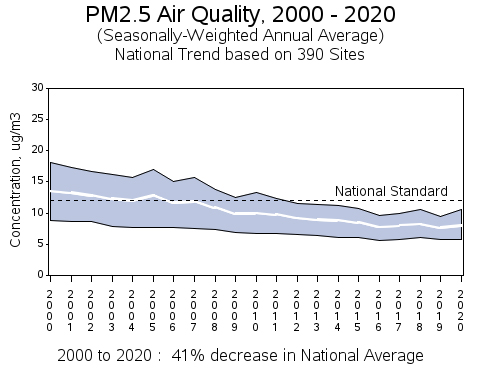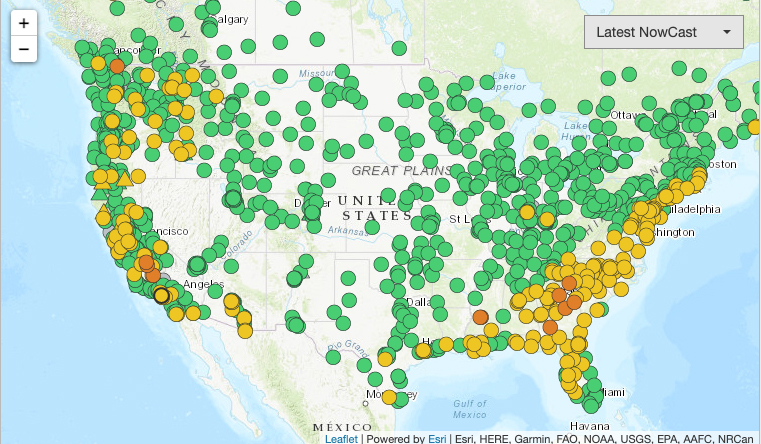My name is Thom Golab, and I serve as president of the American Council on Science and Health. Particulate air pollution has been one of our topics of concern over the years.
In building a republic, not a democracy, the Founding Fathers asked people to give their elected representatives the authority to speak on their political behalf. That's what we do when we elect a member of Congress.
One of the cornerstones of the republic is the idea that the government must always be accountable to the people. Citizens need to know the actions of their representatives, the use of their tax dollars, and how the government handles various issues. This prevents politicians from abusing their power or misusing taxes since the people can always hold their leaders accountable. In short, Americans quickly decided that sunshine and transparency were necessary to guarantee good government.
These same rules must apply to the unelected bureaucracy that Congress has entrusted in handling our interests. But as the bureaucracy has grown, it has become more powerful, overshadowing the very laws Congress established for the various agencies. And they have become less transparent to both Congress and the public. To address this, in 2009, the Department of Justice’s Office of Information Policy issued FOIA Guidelines requiring all agencies to reaffirm the government’s “commitment to accountability and transparency.” Among other things, the Guidelines stressed the importance of proactive disclosures and timely responses to FOIA requests. Agencies were also instructed to take steps, including the greater use of digital technology, to ensure an effective system for responding to requests. The Guidelines also emphasized that FOIA is everyone’s responsibility and highlighted the key roles played by FOIA professionals and agency Chief FOIA Officers, who must report each year to the Department of Justice.
In May 2020, as directed by President Trump’s Executive Order, the U.S. Environmental Protection Agency (EPA) announced its first-ever proposed rule to establish consistent requirements and procedures for issuing guidance documents.
President Biden’s chief science officer touted the need for transparency
“By making research publications, study data, analytical software and code, and study protocols more readily available for inspection and reuse as Federal science agencies are currently doing.”
But the Biden administration has made known that under its leadership, the “Transparency Rule” would not be followed.
This is a disgrace—a disgrace to America, to the Constitution, and the People.
The EPA bureaucracy has avoided transparency at all stages, be it taxpayer-funded research or the use of this research to create onerous and very often unnecessary regulations. They have avoided “Obama-era” FOIA guidelines by hiding taxpayer-funded research at universities (who are not bound by FOIA requests) and through a non-governmental Health Effects Institute, which serves as a conduit for taxpayer-funded research and is not accountable to Congress or taxpayers.
The EPA bureaucracy has avoided independent voices and skeptics. And now we are before CASAC, which is composed primarily of academics from the research sector who are heavily funded and therefore indebted by the bureaucracy this committee was created to oversee.
Now, as to the matter of tightening the regulations surrounding particulate matter and ambient air quality, as described in the Ozone National Ambient Air Quality Standards (NAAQS)
Rule Summary
On December 23, 2020, the EPA reviewed the full body of currently available scientific evidence and exposure/risk information and decided to retain the existing ozone NAAQS. EPA’s decision is based on its judgment that the current NAAQS protect public health with an adequate margin of safety, including the health of at-risk populations, and protect the public welfare from adverse effects. The existing primary and secondary standards, established in 2015, are 0.070 parts per million (ppm), as the fourth-highest daily maximum 8-hour concentration, averaged across three consecutive years.
Particulate Matter (PM2.5) Trends
Using a nationwide network of monitoring sites, EPA has developed ambient air quality trends for particle pollution, also called Particulate Matter (PM). PM2.5 describes fine inhalable particles, with diameters that are generally 2.5 micrometers and smaller. Under the Clean Air Act, the EPA sets and reviews national air quality standards for PM. Air quality monitors measure concentrations of PM throughout the country. EPA, state, tribal and local agencies use that data to ensure that PM in the air is at levels that protect public health and the environment.
Nationally, average PM2.5 concentrations have decreased over the years, and the nation is on track for continued improvement of the clean air that we already enjoy.

The only locations in the entire nation with potentially questionable PM2.5 levels are in Southern California, impacted by vehicular emissions and far from heavy industry. Improving that situation would require a detailed investigation of specific PM components and their sources. A purely bureaucratic response from Washington will not do the job. Efficient regulation requires local solutions.

I have three main scientific issues:
- If, as many taxpayer-funded researchers claim, diseases caused by ozone and PM2.5 are on the rise, yet the EPA’s measurements of ozone and PM2.5 show there to be a drop in ozone and PM2.5; then clearly, these diseases can’t be caused by ozone and PM2.5. The data show there to be an inverse relationship.
- If the EPA’s measurements of ozone and PM2.5 show them to be falling (and NASA’s satellite images corroborate these measurements), then the regulations are working, and we should continue to let the existing regulations continue to do their job. It makes no sense to waste taxpayer funds on studies linking certain diseases to ozone and PM2.5.
- Regulations intended to protect public health depend on accurate measures of human exposure, but we spend up to 90% of our lives indoors and even more for the most vulnerable among us, notably infants and the frail elderly. EPA has an office for indoor air quality; it seems disconnected from the EPA epidemiologists and rule-makers. Indoor PM2.5 includes cigarette smoke, cooking fumes, pet dander, household dust, but only a fraction of the outdoor air pollution that infiltrates indoors. While outdoor PM2.5 levels tend to be relatively uniform (except near traffic), this is far from the case within the residences in the areas covered by outdoor monitoring. This situation not only threatens public health, but it invalidates all of the outdoor epidemiological studies on which EPA rulemaking has been based.
We believe the CASAC would be well advised to focus on the adequacy of EPA research that may affect us all rather than tweaking regulations based upon purely local concerns.
To request to speak at the February 25th CASAC meeting, please email Aaron Yeow at the EPA. Here’s his email: yeow.aaron@epa.gov
CASAC page: Meeting | US EPA
Federal Register Notice: 2022-00110.pdf (govinfo.gov)




